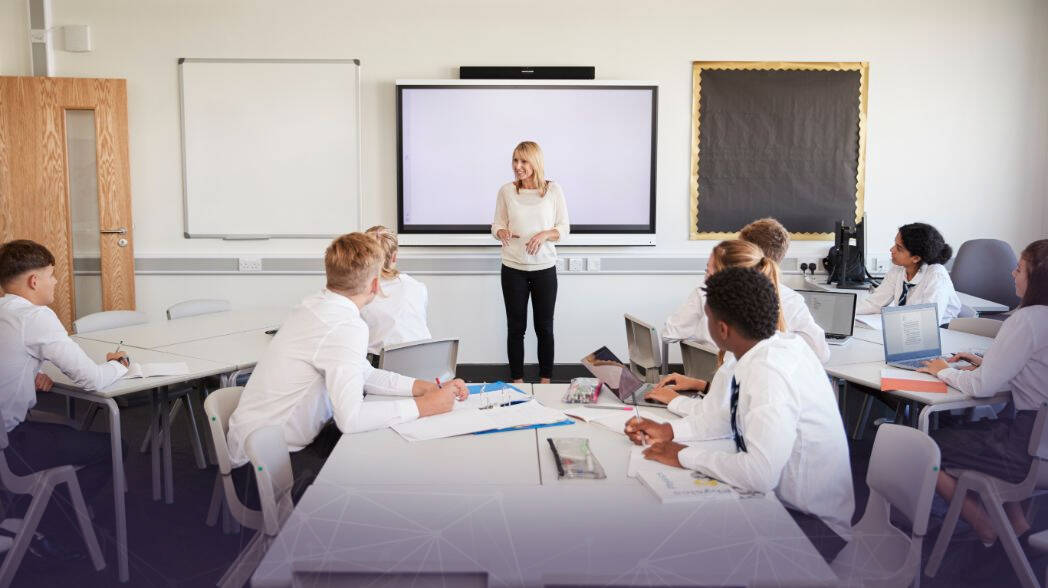Interactive displays have gained immense popularity in the educational world in recent years, with many schools and districts investing in them to enhance teaching and learning experiences. In this article, we will discuss the top 7 benefits of using interactive displays in the classroom.
1. Increased engagement and active learners.
Students are more involved in lessons presented through interactive displays, which offer bright, clear images and dynamic opportunities for interactivity. They can access learning materials in ways they are already familiar with, such as tapping, dragging, scrolling, and swiping.
2. More opportunities for collaboration.
Students can discuss and work together on activities and tasks as the display’s look and feel are similar to their personal devices. Multi-touch capabilities allow more than one student to add annotations, highlight, or move content as they see fit. Some displays also have screen mirroring software, enabling students learning from home to participate in class discussions.
3. Innovative software and learning apps come with interactive displays.
Manufacturers are making sure that their interactive displays come equipped with classroom software and learning apps. Teachers can create interactive lessons that include multiple question types, docs, images, videos, slide presentations, and more in a matter of minutes. Displays can also include learning apps, many of which are aligned with key learning objectives. Some apps include dual language support so that students can learn French, German, Spanish, and other languages.
4. Ability to import of third-party interactive lessons.
Teachers have created and used activities and lessons that have proven successful for them. State-of-the-art interactive displays have platforms that can import third-party interactive whiteboard lessons, saving teachers’ time and effort.
5. Screen mirroring for hybrid learning.
State-of-the-art interactive displays have screen mirroring software that enables teachers to cast images on the display to student devices. This feature is especially useful for hybrid learning environments when some students are learning from home. These students can participate in class discussions and collaborate on tasks using their web-enabled devices.
6. Accessible for students with disabilities.
They help students with different disabilities participate actively in lessons. For example, students who have difficulty gripping writing tools such as a pencil or stylus can use their fingers or palm to annotate on an interactive display. Displays mounted on carts help students who are not able to walk to or stand at the board.
7. Save time and money in the long run.
While they may seem like a significant investment initially, they save time and money on printing costs, as all necessary materials are available digitally. Interactive displays also help students learn more effectively and efficiently, allowing teachers to cover more content in less time.
In conclusion, interactive displays offer numerous benefits that can significantly enhance teaching and learning experiences. KBR have been a trusted audio-visual equipment (including Interactive displays) supplier to schools, colleges and universities for decades. So, if you’re looking for quality audio-visual (AV) equipment to suit your specific needs, we could have the perfect solutions for you. We also offer flexible leasing options, so schools don’t have to wait for budgets to be refreshed to purchase AV equipment for multiple or even all classrooms (see more info about leasing). Contact us to see how we could help your school.

